JOËLLE TUERLINCKX
Some images do not present a picture; instead they speak to the imagination. Specific to such images is that they are but minimally present. In the (exhibition) space a place for thought comes about through a ’present absence’. It is up to the visitor to fill the mental and physical space with an exhibition, an exercise in thought. It becomes more complicated when the space itself becomes the subject of that challenge to the imagination. This is the direction that the work of Joëlle Tuerlinckx veers towards. The artist starts from the existing architecture of the museum or the exhibition space by concentrating on the weak spots, the neglected or forgotten details. With Tuerlinckx’s work the conventional distance between the viewer and the art object fades. Her exhibitions are registrations of moments, proposals for temporary relationships between space, time and the world.
Tuerlinckx puts divisions of time into perspectives. She draws new relationships between 1 second, 1 hour, 1 day, 1 month, 1 year. She introduces other time measuring instruments (’étalons’), such as the counting of things (taking account of time rather than with a view to producing calculation results), or the stick or the line with the letter A at both endings. Beginning and ending: where do they come loose from each other? Tuerlinckx shows, for example, the open page of a catalogue; that forms a fragment of the complete catalogue, that consequently forms part of a pile of catalogues, that is part of a collection of objects on a table, that is a fragment of an exhibition, that forms a fragment of a Tuerlinckx’s artistic activity, that eventually seems to be subsumed in global time. In this way she makes the viewer aware of the unfolding of time.
The research of the experience of time and space of the exhibition space would not be complete without elements that wish to break open or expand this space. Her films are, among other things, elements that can move outside of the exhibition space. There are abstract films, studies on film, travel films, ’blocs de réalité’ (unprocessed ’pieces’ of reality, the registration of moments of time from daily life), archive films, catalogue films, (a publication is ’read’ with a camera in hand), waiting films, fixed films, ’poèmes de travail’, counting films,… “For screens, monitors, television, bedrooms and living rooms,” as she herself indicates. Everywhere things cross one another, on the one hand in a specific, consciously chosen structure, on the other hand as if everything has yet to begin.
Tuerlinckx’s works offer time and space for experience. “I cross spaces and explore the specific time segments at each of these crossings, I observe how these spaces present themselves to me (…); actually, I observe how the space penetrates and affects the human being, and how he carries these blocks of time, which themselves form part of and are a consequence of these spaces. I attempt to comprehend the metrology of time, more than the measuring and evaluation of the spaces. “
(Joëlle Tuerlinckx, invitation ’New Projects’, Museum Dhondt-Dhaenens, Deurle, 1999).
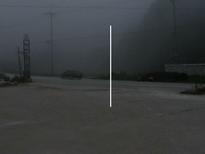
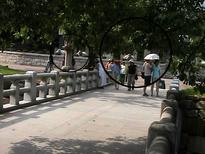
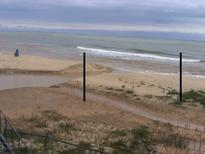
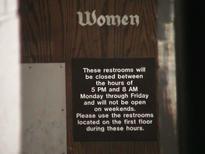
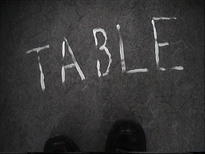
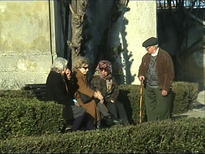
- ° 1958 Brussels (Belgium). Lives and works in Brussels.
-
EVENEMENTEN
- Les Films Eux-mêmes: Joëlle Tuerlinckx par Willem Oorebeek
- 2 1/2 Dimensional: Film Featuring Architecture
- Argos @ Galerie Le Granit
- Artist in focus
- Slow (36h)
- Zona de mestizaje - Cine y Vídeo de Artistas Belgas
- Sven Sterken: New Stories for Brussels. Strategies for a dissident Imagination of the City
- Joëlle Tuerlinckx
- Joëlle Tuerlinckx - Bookpresentation: autour de FILM.CINÉMA EXPOSITONS. PROJECTIONS
- Joëlle Tuerlinckx & Willem Oorebeek - Le Visiteur Parfait
- New Stories for Brussels. Strategies for a Dissident Reading of the City. On the image of the Belgian capital in recent video art.
- Michael Newman - Infinity and Void in the work of Joëlle Tuerlinckx
- STEP UP! Belgian Dance and Performance on Camera 1970-2000 - Chapter 3
- Joëlle Tuerlinckx - Audio and Visual Days. Journal de jours
- Ciclo Vídeo Belga
-
At view in the media library
WERKEN- CLICHÉs. BARREs. BÂTONs. FORMEs. FIGUREs (I) ensemble 'BXL ABSTRAIT 01'
- CLICHÉs série 'fond gris' (I) ensemble 'BXL ABSTRAIT 02: 8 jaunes sensibles' version intégrale
- CLICHÉs série 'fond gris' (II) ensemble 'BXL ABSTRAIT 03: rose, blanc.soleil' version intégrale
- DESSINs NÉGATIFs ensemble 'SALLE ROSE' version originale 'a stretch museum scale 1:1'
- ÉTUDES AMERICAINES CHICAGO CLEAVELAND NEW YORK 2003
- Fable de plage ou la libellule et le requin
- Fond Gris (26/09)
- Korean Studies
- LA FILLE QUI DESCEND L'ESCALIER
- LES 7 HOMMES QUI MARCHENT + RESERVE
- LES 8 HOMMES QUI MARCHENT
- Le Visiteur Parfait - video
- L'homme qui compte ou Ferraris étude
- SPACES THESIS PART 1 (winter 1)
- SPACES THESIS PART 2 (winter 2)
- SPACES THESIS PART 3 (summer 1)
- SPACES THESIS PART 4 (summer 2)
- STRETCH FILMs SCALE 1:1 / STUDIES FILMs ARCHITECTURE II 2000-2002
- TABLE TABLE
-
ARGOS PUBLICATIES